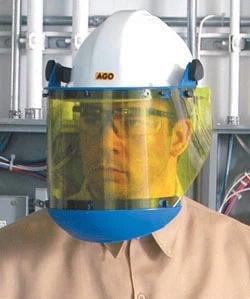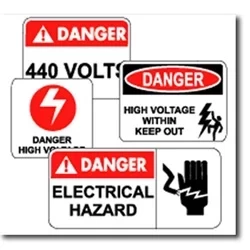Cost-Benefit of Implementing Advanced Measures

Investing in advanced arc flash safety measures is a crucial decision for organizations that operate in environments with electrical hazards. These investments involve not only the adoption of new technologies but also the implementation of comprehensive safety programs. Understanding the financial implications of these measures is essential for making informed decisions.
In the realm of arc flash safety, innovation promises significant improvements in worker protection. However, implementing cutting-edge technologies like arc quenching devices, remote racking solutions, or predictive analytics requires investment. This article aims to provide a framework for weighing the costs of such measures against their potential long-term benefits.
Visit Our Arc Flash Study Course
Upfront Costs
- Equipment Upgrades or Replacement: Retrofitting existing switchgear with arc-resistant technology, or replacing legacy equipment entirely, can involve significant capital expenditures.
- Implementation and Integration: New systems may require changes to infrastructure, power distribution layouts, or communication protocols, adding to project costs.
- Worker Training: Familiarizing personnel with new equipment, monitoring systems, or work procedures associated with innovations requires dedicated time and resources for training delivery.
Potential Long-Term Savings and Benefits
- Reduced Incident Severity: Technologies aimed at inherently reducing arc flash risks have the potential to mitigate the severity of injuries should an arc flash occur. This directly translates into lower medical costs and shorter recovery times.
- Minimized Worker Compensation Costs: Lesser injuries and faster return-to-work rates can positively impact an organization's workers' compensation expenses and long-term insurance premiums.
- Avoidance of Regulatory Penalties: By demonstrating a proactive stance towards safety, particularly exceeding minimum regulatory requirements, companies may reduce their risk of OSHA fines.
- Insurance Premium Reduction: Some insurance providers may offer incentives in the form of lower premiums for organizations that demonstrably invest in advanced safety technologies.
- Operational Stability: Arc flash incidents often force equipment shutdowns and can cause production downtime, directly impacting revenue. Reducing the likelihood of these events promotes operational efficiency.
Financial Implications of Advanced Safety Measures
Initial Investment Costs
The initial costs of implementing advanced arc flash safety measures can be significant. These expenses include the purchase of new safety equipment, upgrading existing systems, training employees, and possibly hiring additional safety personnel. Advanced technologies, such as real-time monitoring systems and smart PPE, often come with a higher price tag due to their sophisticated features.
Training and Implementation Expenses
Proper training is essential to ensure that employees can effectively utilize new safety technologies. The cost of developing and delivering training programs, along with the time employees spend in training, adds to the overall investment in safety.
Long-Term Benefits of Safety Innovations
Reduced Accident Rates
The primary benefit of advanced arc flash safety measures is the potential reduction in accident rates. By preventing arc flash incidents, organizations can protect their employees from serious injuries or fatalities. This not only has a direct impact on reducing the human cost of accidents but also translates into financial savings related to medical expenses, compensation, and potential litigation.
Lower Insurance Costs
Implementing state-of-the-art safety measures can lead to lower insurance premiums. Insurance companies often provide discounts or more favorable terms to organizations that demonstrate a strong commitment to safety and risk management. The reduction in accident rates and the enhanced safety record can further negotiate lower insurance costs.
Enhanced Productivity and Operational Efficiency
Advanced safety measures can improve the overall efficiency of operations. By minimizing the risk of arc flash incidents, organizations can reduce downtime associated with accidents and equipment damage. This leads to uninterrupted production processes and better utilization of resources.
Cost-Benefit Analysis Framework
Calculating Return on Investment (ROI)
To evaluate the cost-effectiveness of implementing advanced arc flash safety measures, organizations should conduct a comprehensive return on investment (ROI) analysis. This involves comparing the total costs of implementation against the quantifiable benefits, such as savings from reduced accident rates and lower insurance premiums.
Considering Intangible Benefits
Beyond the quantifiable financial benefits, organizations should also consider the intangible advantages of advanced safety measures. These include improved employee morale, enhanced company reputation, and a stronger safety culture, which can contribute to long-term business success.
Regular Review and Adjustment
The cost-benefit analysis of arc flash safety measures should not be a one-time exercise. Regular reviews and adjustments are necessary to account for changes in technology, regulatory requirements, and organizational needs. This ongoing analysis ensures that the safety program remains cost-effective and aligned with the organization’s goals.
Conclusion
Implementing advanced arc flash safety measures involves careful consideration of the financial implications. While the initial investment can be substantial, the long-term benefits—ranging from reduced accident rates and insurance costs to improved operational efficiency—can significantly outweigh the costs. A thorough cost-benefit analysis, considering both tangible and intangible factors, is essential for organizations to make informed decisions about their safety investments, ultimately leading to a safer and more financially sound operation.






